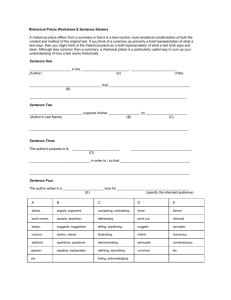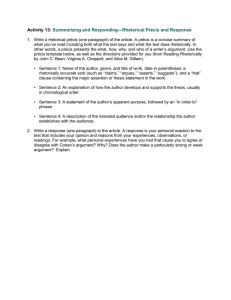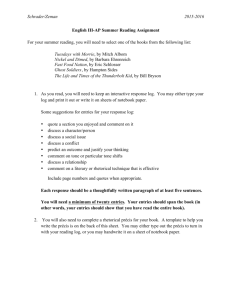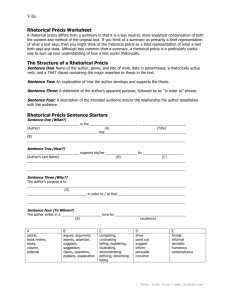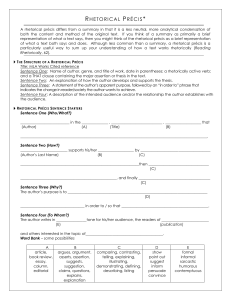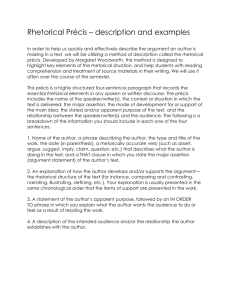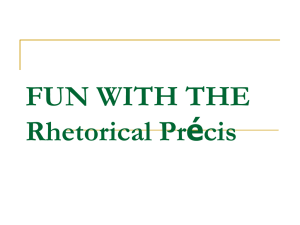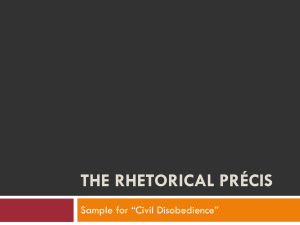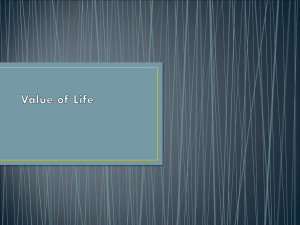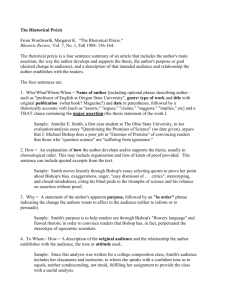Rhetorical Precis
advertisement
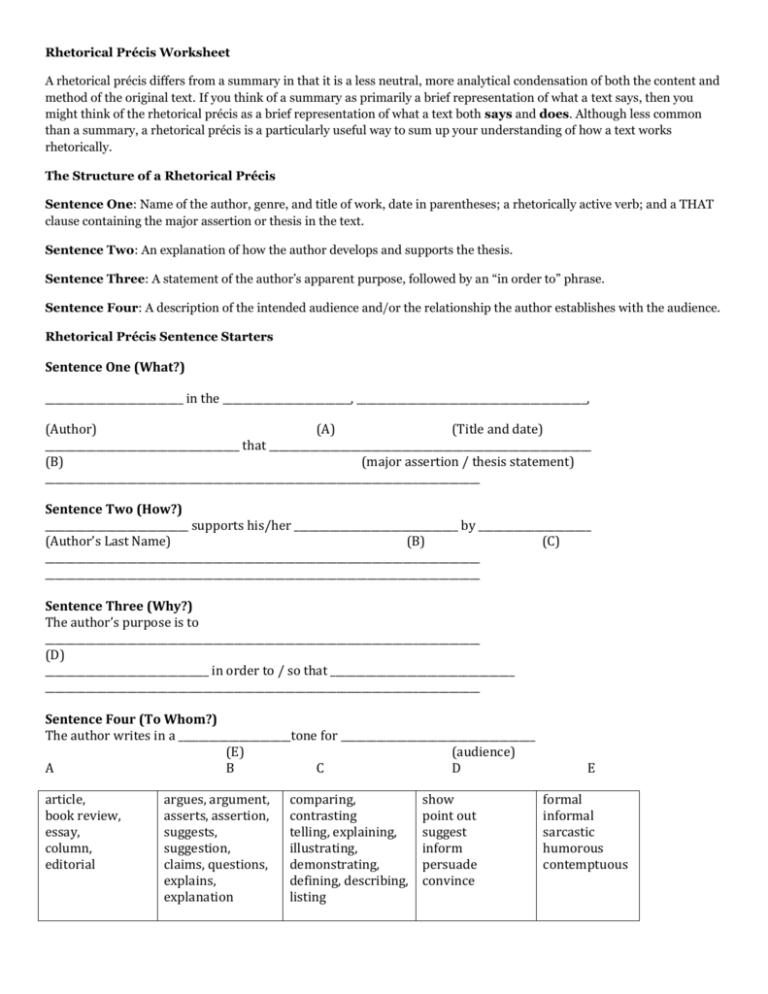
Rhetorical Précis Worksheet A rhetorical précis differs from a summary in that it is a less neutral, more analytical condensation of both the content and method of the original text. If you think of a summary as primarily a brief representation of what a text says, then you might think of the rhetorical précis as a brief representation of what a text both says and does. Although less common than a summary, a rhetorical précis is a particularly useful way to sum up your understanding of how a text works rhetorically. The Structure of a Rhetorical Précis Sentence One: Name of the author, genre, and title of work, date in parentheses; a rhetorically active verb; and a THAT clause containing the major assertion or thesis in the text. Sentence Two: An explanation of how the author develops and supports the thesis. Sentence Three: A statement of the author’s apparent purpose, followed by an “in order to” phrase. Sentence Four: A description of the intended audience and/or the relationship the author establishes with the audience. Rhetorical Précis Sentence Starters Sentence One (What?) ___________________________ in the _________________________, _____________________________________________, (Author) (A) (Title and date) ______________________________________ that _______________________________________________________________ (B) (major assertion / thesis statement) _____________________________________________________________________________________ Sentence Two (How?) ____________________________ supports his/her ________________________________ by ______________________ (Author’s Last Name) (B) (C) _____________________________________________________________________________________ _____________________________________________________________________________________ Sentence Three (Why?) The author’s purpose is to _____________________________________________________________________________________ (D) ________________________________ in order to / so that ____________________________________ _____________________________________________________________________________________ Sentence Four (To Whom?) The author writes in a ______________________tone for ______________________________________ (E) (audience) A B C D article, book review, essay, column, editorial argues, argument, asserts, assertion, suggests, suggestion, claims, questions, explains, explanation comparing, contrasting telling, explaining, illustrating, demonstrating, defining, describing, listing show point out suggest inform persuade convince E formal informal sarcastic humorous contemptuous Rhetorical Precis In "The Ugly Truth about Beauty" (1998), Dave Barry argues that ". . . women generally do not think of their looks in the same way that men do"(4). Barry illuminates this discrepancy by juxtaposing men's perceptions of their looks ("average-looking") with women's ("not good enough"), by contrasting female role models (Barbie, Cindy Crawford) with male role models (He-Man, BuzzOff), and by comparing men's interests (the Super Bowl, lawn care) with women's (manicures). He exaggerates and stereotypes these differences in order to prevent women from so eagerly accepting society's expectation of them; in fact, Barry claims that men who want women to "look like Cindy Crawford" are "idiots" (10). Barry ostensibly addresses men in this essay because he opens and closes the essay directly addressing men (as in "If you're a man...”) and offering to give them advice in a mockingly conspiratorial fashion; however, by using humor to poke fun at both men and women’s perceptions of themselves, Barry makes his essay palatable to both genders and hopes to convince women to stop obsessively "thinking they need to look like Barbie" (8). Barry, Dave. "The Ugly Truth about Beauty." Mirror on America: Short Essays and Images from Popular Culture. 2nd ed. Eds. Joan T. Mims and Elizabeth M. Nollen. NY: Bedford, 2003. 109-12
